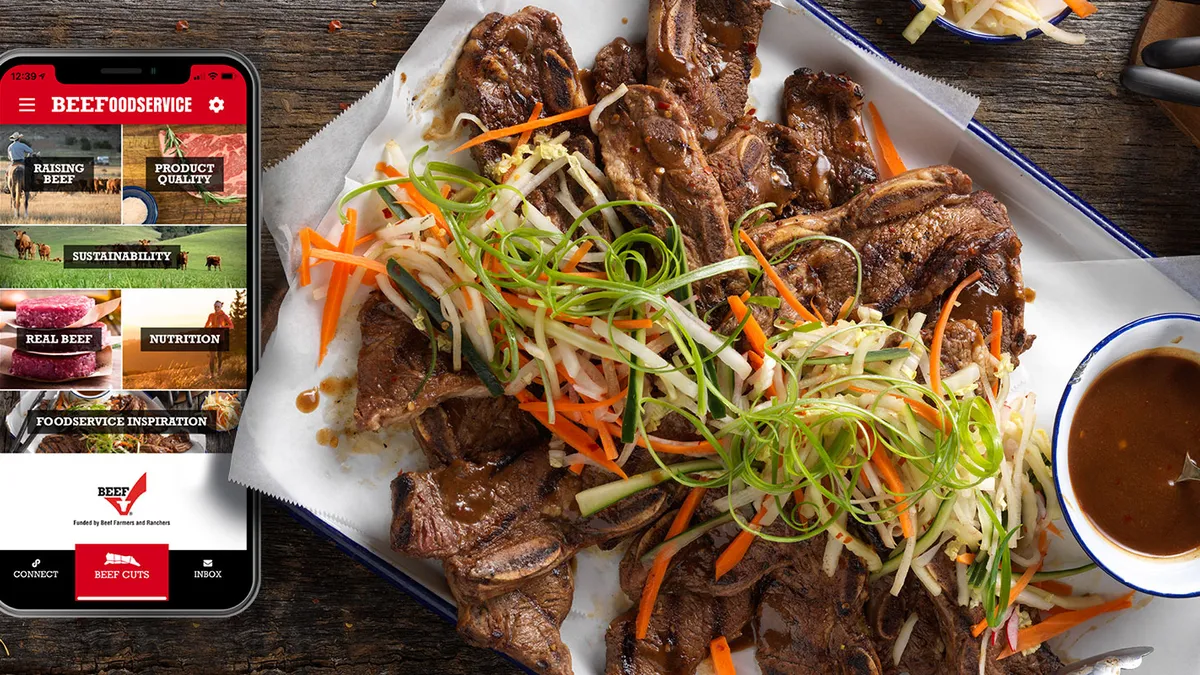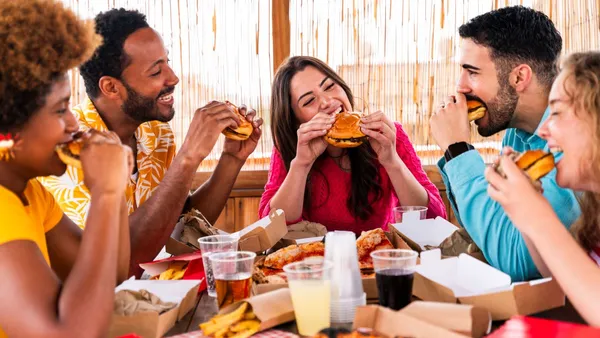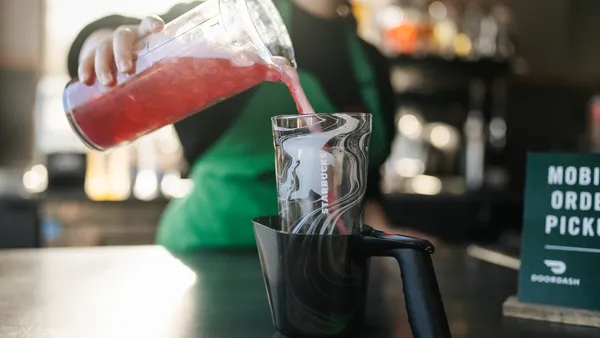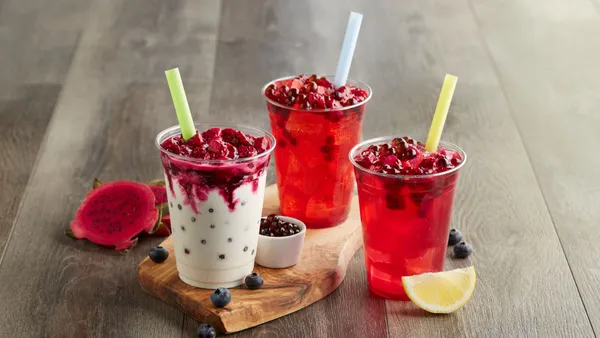As the nation cautiously reopens, elevated expenses are one of the most pressing issues keeping restaurant operators up at night. Already operating on razor-thin margins, they now need to do even more with less as they cope with a double whammy — rising costs for labor, ingredients and sanitation combined with lower foot traffic because of wary consumers and social-distancing requirements.
Given these realities, restaurants are hungry to improve efficiency without sacrificing cuisine or service. One key strategy is using available tools to help make the most of the current environment. That's where the newly relaunched BEEFoodservice app from the California Beef Council (CBC) is helping restaurants improve the back-of-house experience, which in turn leads to more satisfied guests and increased profits.
"We examined the data to determine the most popular and useful topics in our existing app and reorganized the categories to bring those to the forefront in this new iteration," explained Christie Van Egmond, director of retail and food service marketing for the CBC.
Here are three ways restaurants are optimizing their operations — and how the BEEFoodservice app can help.
Reduce menu offerings without sacrificing quality
Huge chains and small restaurants alike are finding that less is more as they pare back menu varieties. The reasons are clear: Reduced prep work can save valuable staff time, and kitchens can prevent waste with fewer ingredients.
The BEEFoodservice app's comprehensive new section on beef options helps chefs select alternative cuts and offers recommended menu applications, even suggesting exciting ways to use beef at all dayparts, Van Egmond said. "The goal is to provide inspiration for chefs with new food service concepts that meet their needs today."
As one of the chefs and Center of the Plate specialist at US Foods' San Francisco division, John Paul Khoury explains that many chefs are adjusting their preparation to take advantage of the market. "That's where I can use the app to help send them in the right direction. If sirloin prices are up but beef tip prices are down, we can make menu adjustments to account for that. Or they might use a term like 'steak sandwich' on their menu, rather than 'coulotte sandwich,' so they can make a quick switch in cuts as needed."
One of the biggest hurdles restaurants face is reduced seating capacity, said Brian Meier, senior food service sales director at Niman Ranch. That has led them to really scrutinize their menu offerings to see how they can turn tables faster. "Whereas before they might have had five or six beef offerings, they are paring back to one or two."
In addition, he noted, owners are wary of stocking up on high-priced items because they could be shut down at any time. With the BEEFoodservice app, they can make more cost-efficient choices while maintaining quality. So, for example, as we head into fall and winter, restaurants are exploring cuts that can be made into seasonal comfort foods, such as stews or short ribs, that are less costly and also require less prep time.
Promote cross-training for more efficient staffing
According to The State of Restaurant Labor Management in 2020 report, more than half of restaurant owners and managers said labor costs negatively affected their business in 2019, and at the time named high labor costs as their top expected challenge for 2020. And of course, that was before labor costs soared because of COVID-19. "Labor challenges are extensive. Operators are working with a skeleton crew both to save money and because they hesitate to hire a full staff in case they have to furlough them again," Meier noted.
With an eye toward optimizing staff, cross-training is essential, Khoury said. "As restaurants adjust their volume, fewer people have to step in and do more things, often moving fluidly from the back to the front of the house."
And that means equipping staff with even more information, said Executive Chef Michael Goularte, who is opening W. Stuart C. Steakhouse in Modesto, California, in 2021, but until then is offering restaurant-quality cuts online under the Stuart Selective Cuts brand.
"With the BEEFoodservice app on their devices, servers or any of my staff can quickly and accurately answer questions about preparation and nutritional information."
Meier concurred, adding that his organization has used the BEEFoodservice app's predecessor for years to train his team. "We rely on the information and videos to train kitchen staff on new items and cuts and to help servers share accurate descriptions of different cuts and preparation methods."
Use more easily accessible training tools to promote best practices
While training is essential, it has to be accessible. In fact, according to the National Restaurant Association's Restaurant Industry 2030 report, two of the top expected developments related to training are that it will increasingly be provided online and on smartphones and that even independent restaurants will have greater access to professional training online.
That's where the BEEFoodservice app steps in, Van Egmond said. "We provide comprehensive, fact-based information on nutrition, sustainability and preparation techniques that restaurant staff can access wherever they are, in addition to links to free online beef-training programs."
"I have a shelf full of books I rarely crack open anymore," Khoury said. "Today, information needs to be at people's fingertips, and the easier to use, the better."
That's where apps can be highly effective, because they are intuitive for younger generations but easy enough for anyone to use.
"The BEEFoodservice app is a snap to use with great descriptions and imagery. The fact that it also helps staff save time and money makes it a win-win," he said.
Want to find out more about maximizing restaurant profits through education? The BEEFoodservice app is available free for smartphone and tablet devices on both iOS (Apple App Store) and Android (Google Play Store) platforms.










